By Stephen Beaumont
It would be the height of absurdity at this point to presume to introduce Wines in Niagara readers to the Brewmaster and Brewery Operations Management program at Niagara College.
It is, after all, a widely recognized and acclaimed program that will next month be celebrating its tenth anniversary. Simply, if you haven’t heard about it by now, you simply haven’t been paying attention.
But like any such program, the Niagara College course is about so much more than mere accreditation. In particular, this one is about the people behind the course, and one person in particular – although he would no doubt modestly slough off any such personal accolades, insisting that it is a team effort.
That person is Jon Downing, Brewmaster Professor.

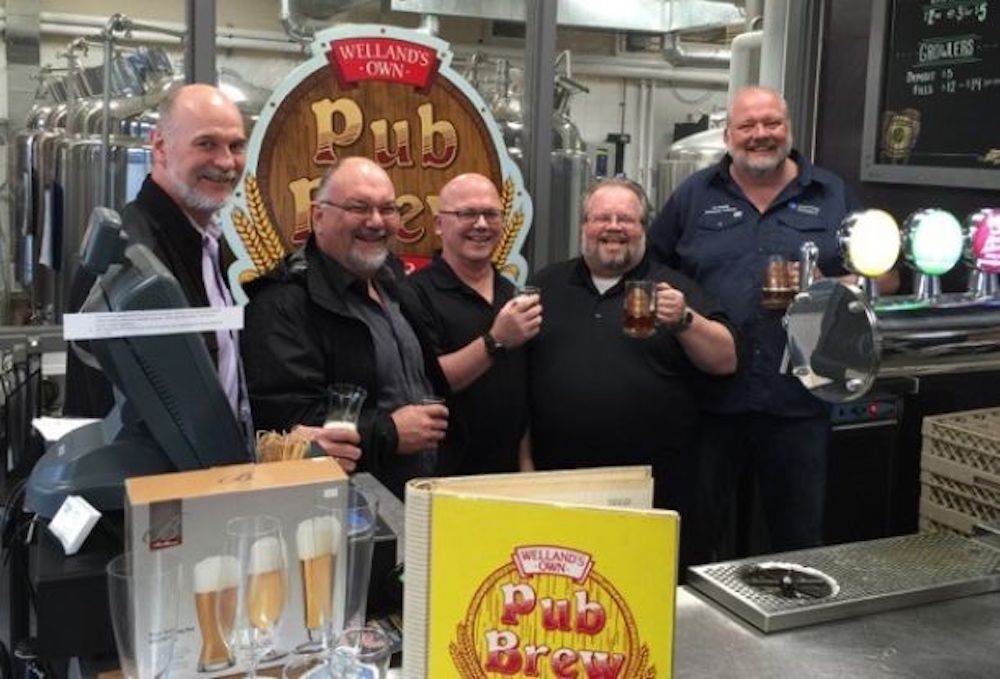
The man behind the beer at Ontario’s first official brewpub, the Atlas Hotel in Welland, Downing was a fixture on the provincial beer scene long before he hatched the idea to add brewing to the College’s offerings in 2007. But he has been the indisputable face of the program, and perhaps the single most prominent figure in southern Ontario beer circles, ever since.
“I saw the need for (brewing) education at the grass roots level,” recalls Downing, ”Its success has been more than I could ever have hoped for.”
That success has been nothing if not remarkable. These days, it’s hard to find a brewery in Ontario that has not in at least some small way been touched by the program, and according to Associate Dean Gary Torraville, almost impossible to go into a Niagara-area brewery and not find a program graduate.
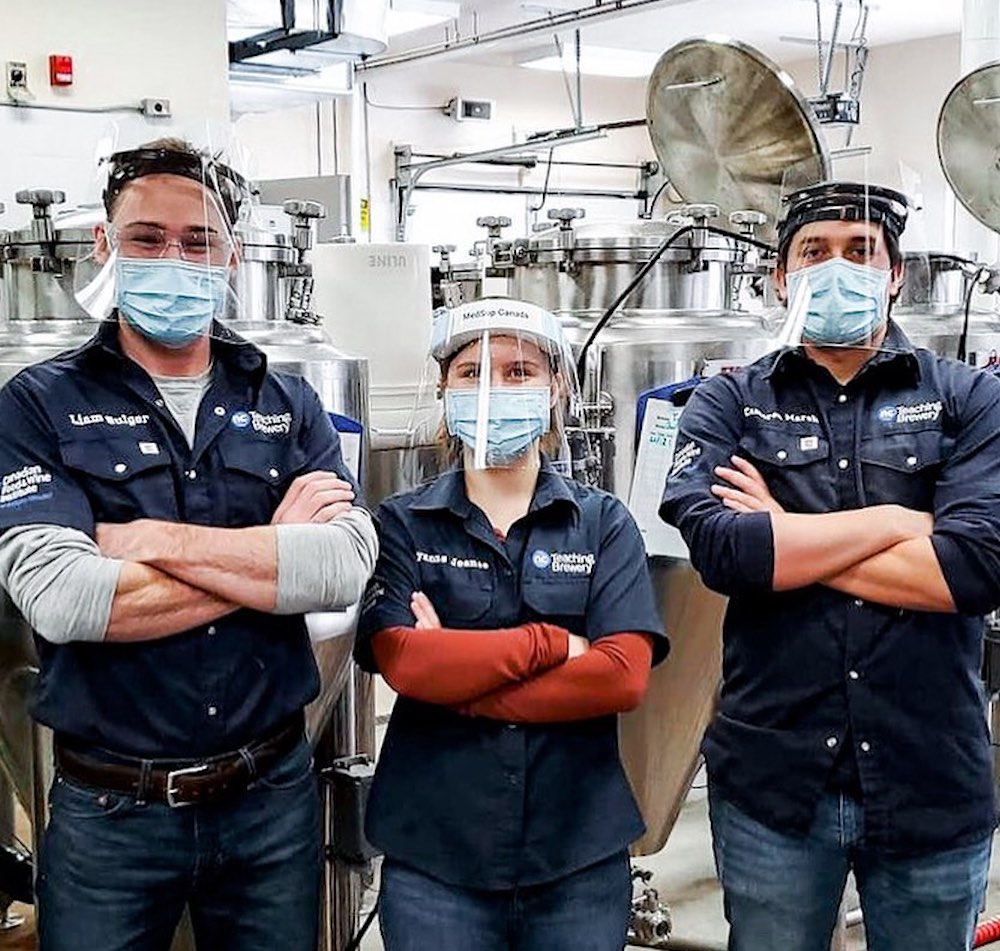
“I like to think that the program has helped to propel the growth (of Ontario’s craft beer industry),” says Torraville.
Of course, having turning out about 375 grads in its 10 years, the program’s impact has ranged far beyond just this province. “We have graduates working all over the world, and we’re pretty good at staying in touch with them,” says Downing. “I know we have one working in South Korea, one in Venezuela and another in Panama.”
Not even the pandemic could slow down the brewing program, which today graduates about 50 to 60 aspiring pro brewers every year, says Torraville. The business of transitioning to COVID-safe learning began in March of 2020, following a final day of in-class learning on March 13, and lasted for a couple of months.
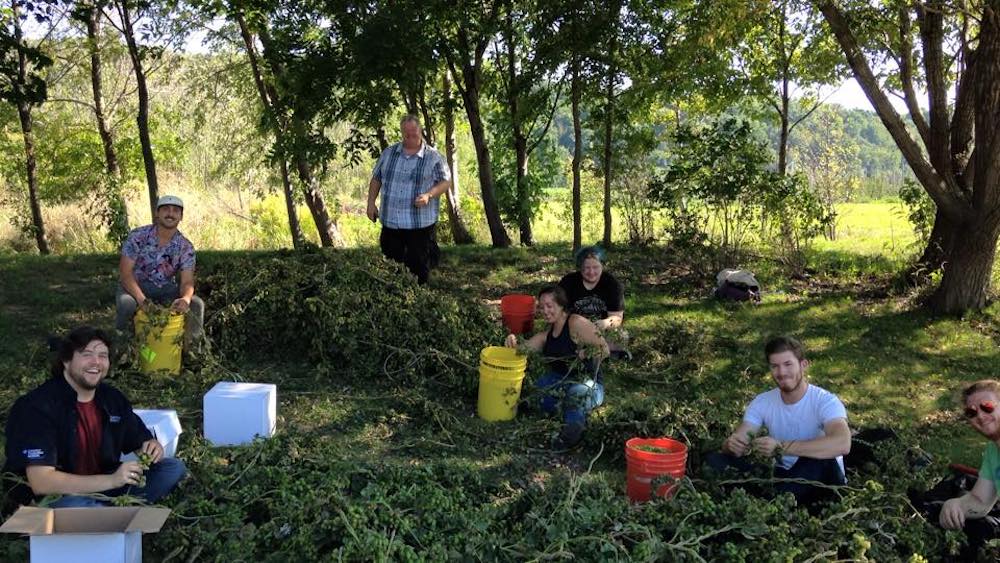
“By July, we received confirmation that in-class learning could continue, and we resumed in September,” recalls Torraville, citing the strict protocols they put in place, including a tap-in, tap-out system for contact tracing and the use of a sanitizer proven to kill the COVID virus in 60 seconds. As a result, there have been zero cases originating within the College, he says.
“In a way, (the protocols) have been a positive, since it has reinforced to the students how important are checks and tests, even without COVID,” says Downing.
And so, brewing continues at the College as it has for a decade, with an average of about 240 different beers produced every year, says Downing, including a ‘Beer 101’ series that is consistently available through the College store. The recipes for these beers remain the same year-to-year, says Downing, but because the school runs three courses per year, they are produced by different students all the time.
And as the six reviews below – half of the ‘Beer 101’ range – will attest, they are also beers very much worthy of your time and money.
A Six-Pack of Niagara College Beers
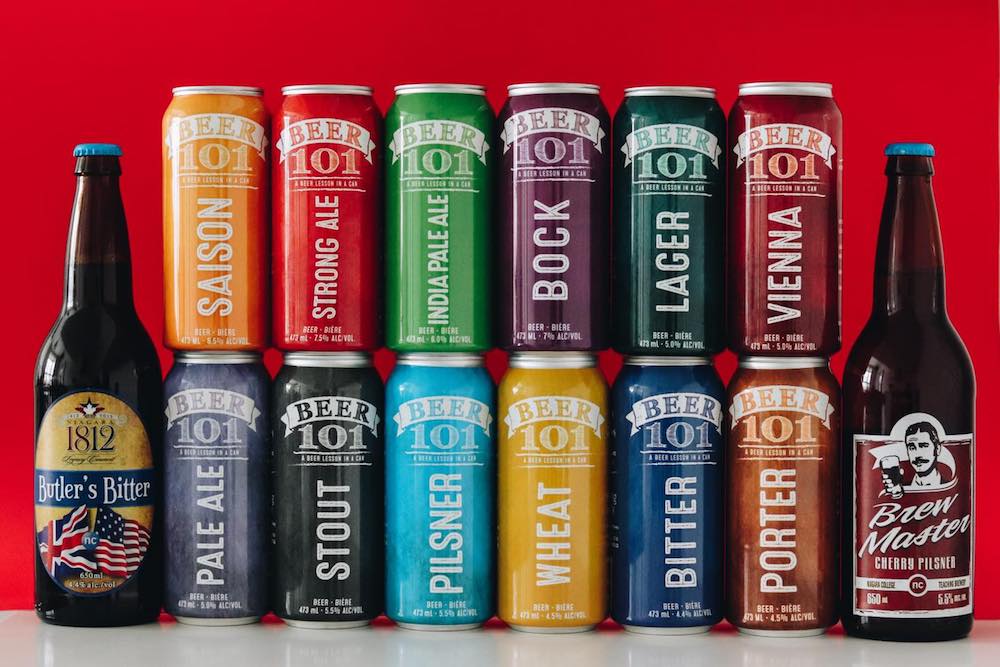
Niagara College Saison (6.5%): Gently hazy and medium gold in colour, the nose on this is a bit reticent, but eventually opens up to lightly peppery, faintly allspicy, orangey aroma. The body is a ways from a classic saison, but that’s not necessarily a bad thing. The start has a candied orange sweetness that leads nicely into a more spicy middle, still on the sweet side, with peppery orange and candied lemon most prominent, apricot and even a bit of dried peach in support. The finish is off-dry and quite spicy, predominantly white pepper, and a bit warming. An interesting and somewhat unusual approach to saison that really works.
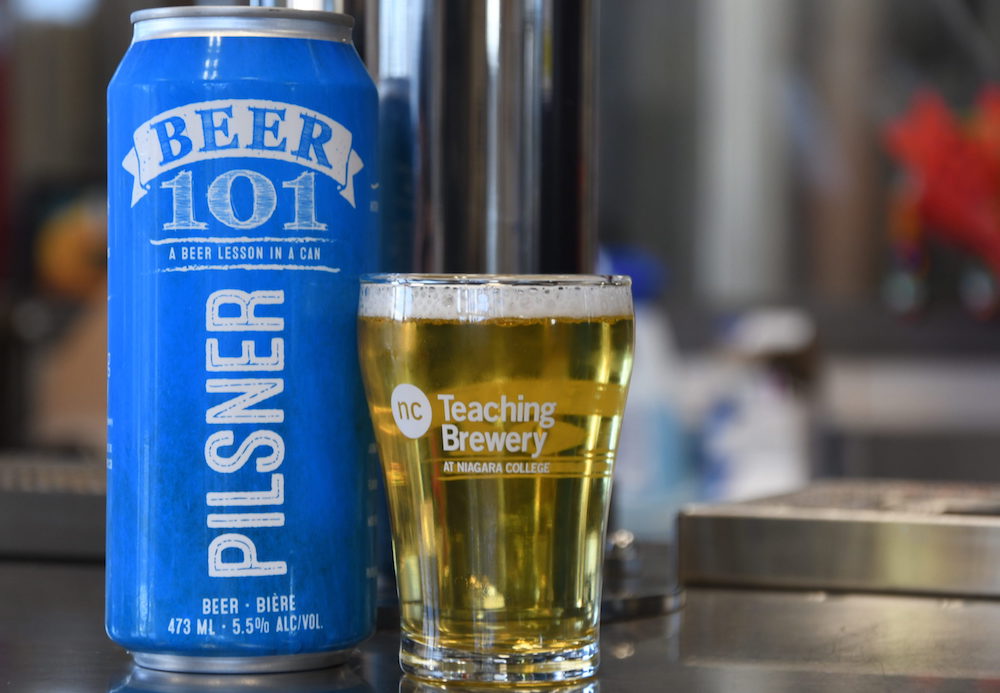
Niagara College Pilsner (5.5%): Light to medium gold with a soft haze, the nose of this Czech-inspired Pilsner is more grassy than floral, however there are definite wildflower notes and a hint of tobacco leaf also present. The body is very soft and smooth, with the mild to moderate bitterness blending easily and seamlessly with pillowy malt. The light sweetness up front fades through the taste to a dry finish. A bit timid, perhaps, but with superb balance and admirable quaffability.
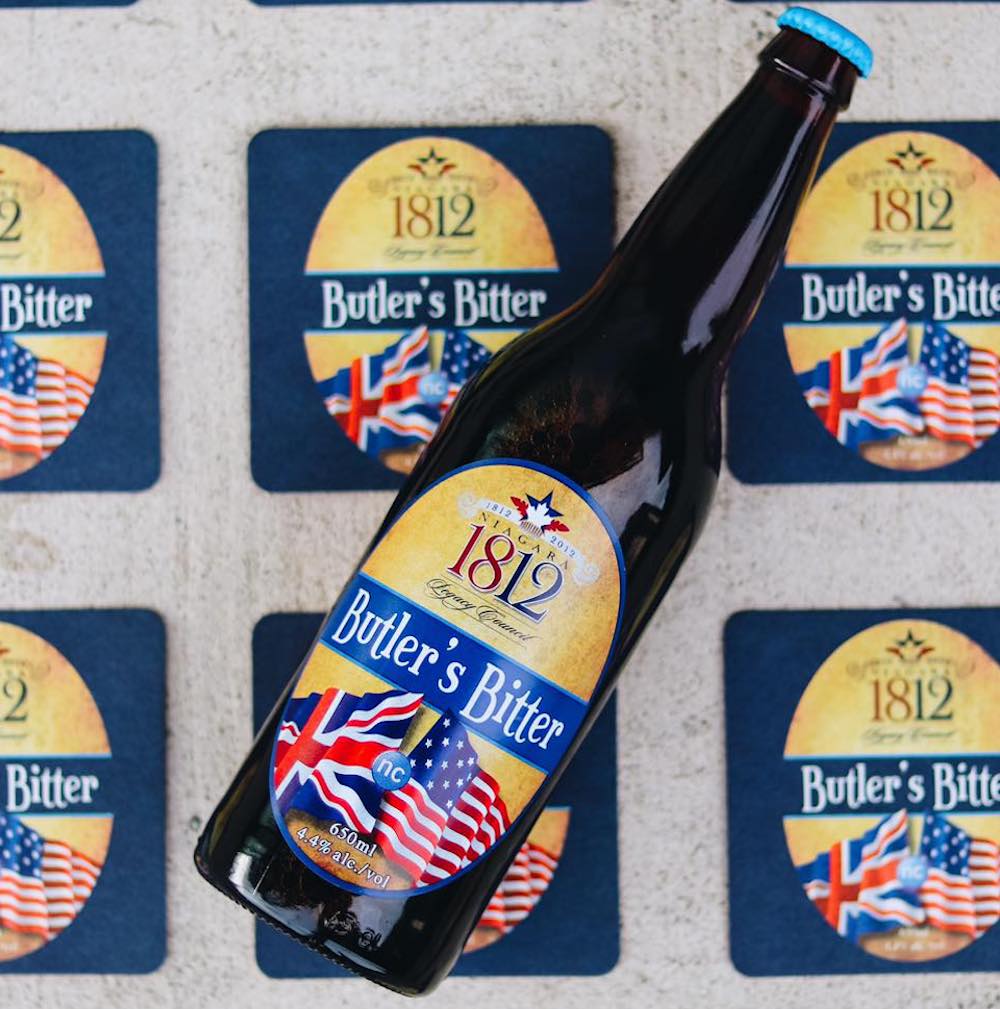
Niagara College Bitter (4.4%): Aka Butler’s Bitter, a regular award-winner, this is a lovely amber in colour with a fairly nutty aroma – hazelnuts in particular – and dried leaf and forest floor notes in support. It has a light caramelly sweetness up front, almost more in keeping with an ESB than a Best Bitter, followed by a more tannic, dried leaf, and moderately bitter middle and dryly bitter finish. Aside from the up-front sweetness, this is spot on to style, but could benefit from slightly greater malt and hop complexity.
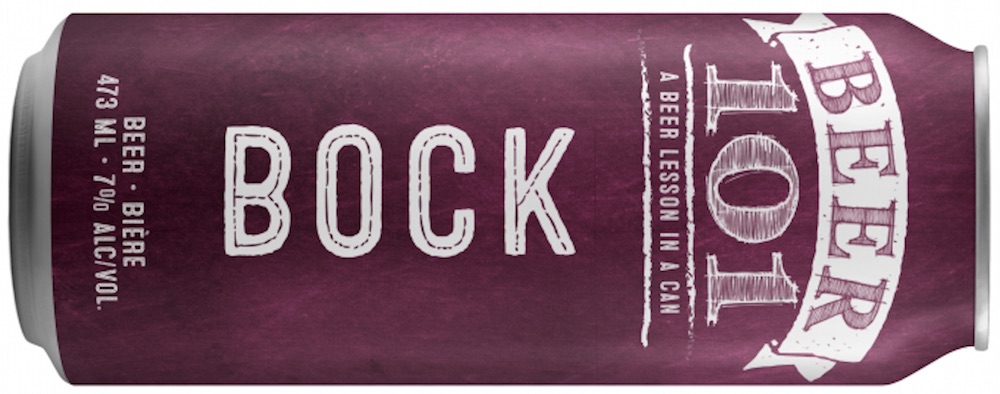
Niagara College Bock (7%): A beautiful deep reddish amber in colour, this has a rich, perfumey, and sweet toffee-caramel-molasses aroma. On the palate, it continues with its malty richness, offering a plummy toffee character, just a touch of roastiness and gentle hints of baking spice, culminating in a bittersweet and warming finish. Some might argue that it’s a bit too full-bodied for its style and more Doppelbock-like, but I have zero complaints.
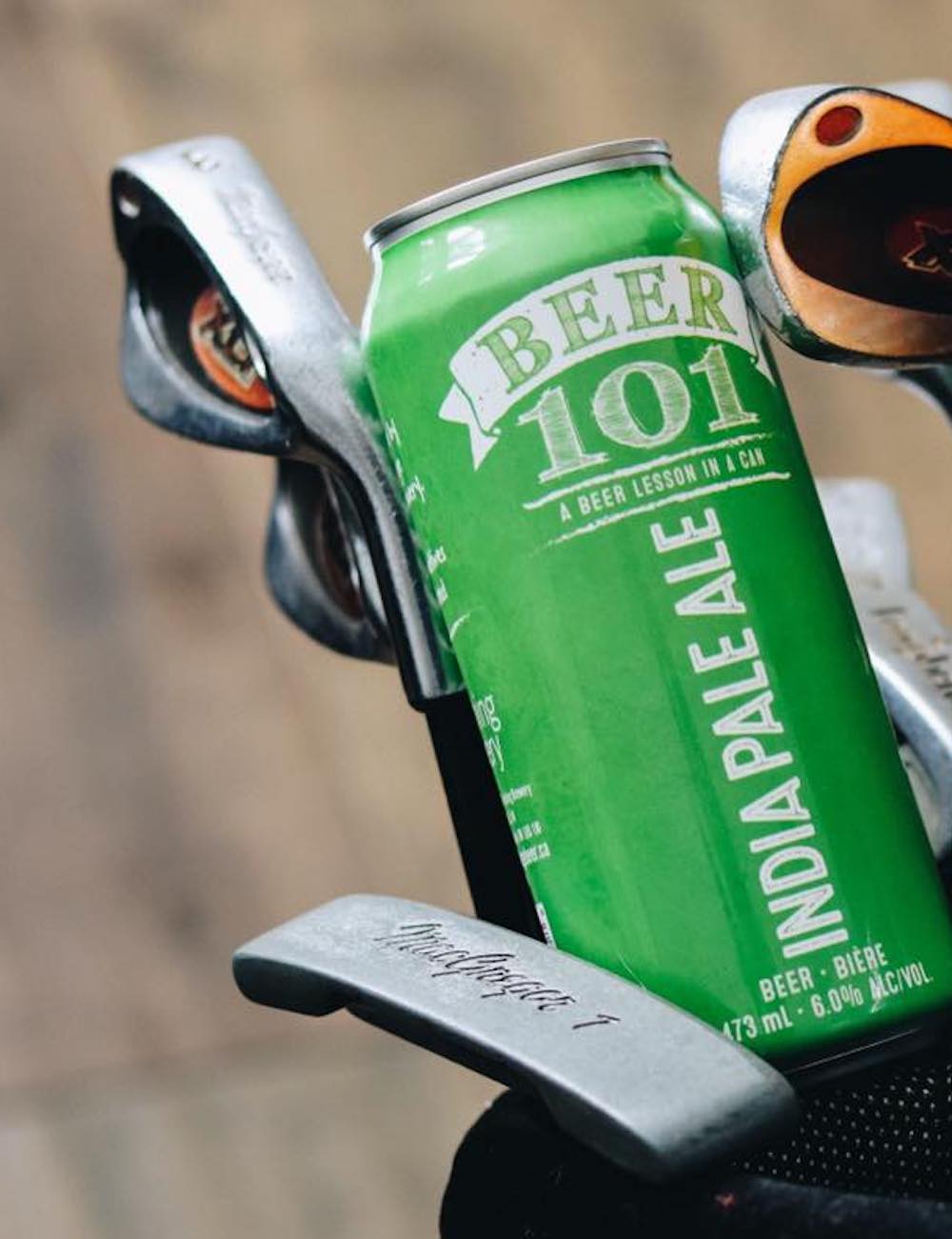
Niagara College India Pale Ale (6%): I’m going to ignore the misinformation contained in the lesson notes on the side of the can – the myth about IPA being brewed with more hops and fermented to higher strength in order to help it survive the journey from England to India has been thoroughly debunked – and instead just focus on the beer. (But c’mon, Niagara College!) Pale to medium gold and lightly hazy, this is decidedly a New World IPA, with bold grapefruit, lemon, and blackberry notes on the nose, plus a sharp, fresh, crisp palate of lightly sweet and orangey caramel followed by piney and grapefruity flavours, all finishing with a sharp dose of old school, American C-hop style bitterness. A solid hop profile that would benefit, perhaps, from a bit more complexity in the malt.
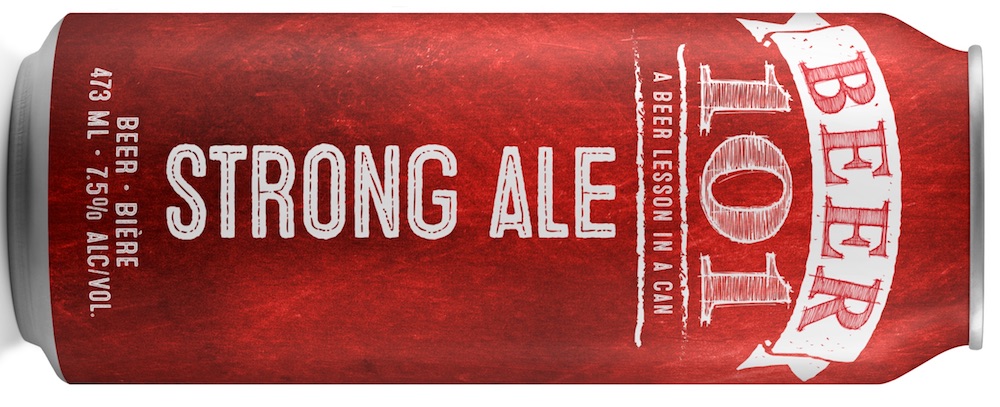 Niagara College Strong Ale (7.5%): There is no real ‘Strong Ale’ beer style, but there are Scottish Wee Heavy and English Old Ale, which are noted in the lesson notes on the can, but are not the same thing. I’d say that this deep reddish-amber ale leans more toward the former, with ample plummy, raisiny toffee notes on the nose, rich fruity-caramel flavours in the body – dark plum and sultana, black cherry, a bit of mandarin orange – and a drying, warming finish. Stylistic confusion notwithstanding, this is a beer I’d be most happy to sip in front of a roaring fire, perhaps alongside a few morsels of spice cake.
Niagara College Strong Ale (7.5%): There is no real ‘Strong Ale’ beer style, but there are Scottish Wee Heavy and English Old Ale, which are noted in the lesson notes on the can, but are not the same thing. I’d say that this deep reddish-amber ale leans more toward the former, with ample plummy, raisiny toffee notes on the nose, rich fruity-caramel flavours in the body – dark plum and sultana, black cherry, a bit of mandarin orange – and a drying, warming finish. Stylistic confusion notwithstanding, this is a beer I’d be most happy to sip in front of a roaring fire, perhaps alongside a few morsels of spice cake.
About Stephen Beaumont
Stephen Beaumont is one of the world’s leading writers on beer and spirits, with 15 books to his credit, including Canadian Spirits: The Essential Cross-Country Guide to Distilleries, Their Spirits, and Where to Imbibe Them (with Christine Sismondo) and the upcoming, fully revised and updated third edition of The World Atlas of Beer (with Tim Webb).








Comment here